
Nakajima
B5N2 'Kate'
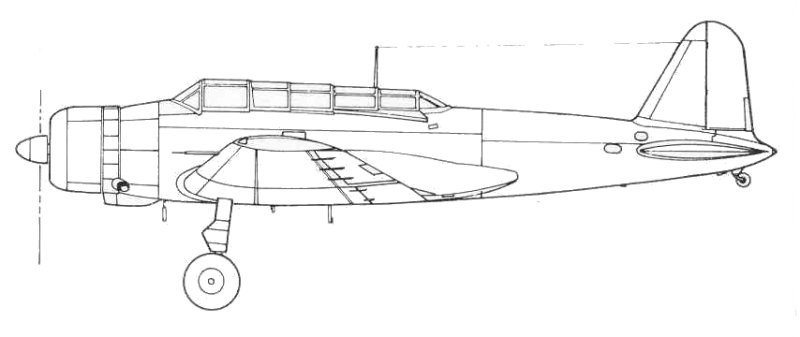
When the Pacific War began the Nakajima B5N2 was the most modern type of carrier borne torpedo to be operated by any of the worlds navies, and on December 7, 1941, 144 aircraft of this type crippled the battleship force of the US Pacific Fleet at Pearl Harbor. During the following twelve months carrier based B5N2s were used to deliver crippling fatal blows to the Lexington, the Yorktown and Hornet, while land and carrier based B5N2s supported Japanese amphibious attacks on the entire war front.
Designed to a 10-Shi specification calling for a single engine carrier attack bomber of monoplane design. The prototype featuring such innovations as Fowler flaps and a variable pitch propeller and powered by a Nakajima Hikari 2 nine cylinder air cooled radial engine was completed in December of 1936 and made its first flight in January of 1937. The many technical innovations incorporated were a source of worry for the Navy who feared that the aircraft would be excessively difficult to maintain and starting with the second prototype the hydraulic wing folding mechanism was replaced with a manual system and the Fowler flaps were changed to more conventional units. the engine was replaced with that Hikari 3 driving a constant speed propeller. Also changed was the installation of integral wing tanks of increased volume. In this form it won over the Mitsubishi B5M1 and went into production in November of 1937 as the B5N1.
The B5N2 first flew in December of 1939 as externally identical to the B5N1 but was powered by a 1000 hp Nakajima Sakae 11 radial engine. The Sakae was a fourteen cylinder double row radial that was smaller in diameter than the 9 cylinder single row Hikari 3. As a result Nakajima engineers decided to use a smaller diameter cowling giving the pilot a better view and reducing drag. A smaller spinner was fitted to the propeller hub to reduce drag further and increase engine cooling. In spite of a 36% increase in power the B5N2 was not appreciably faster than the B5N1 but the Navy decided to accept the change as the Sakae engine was more reliable that the Hikari.
The Kit
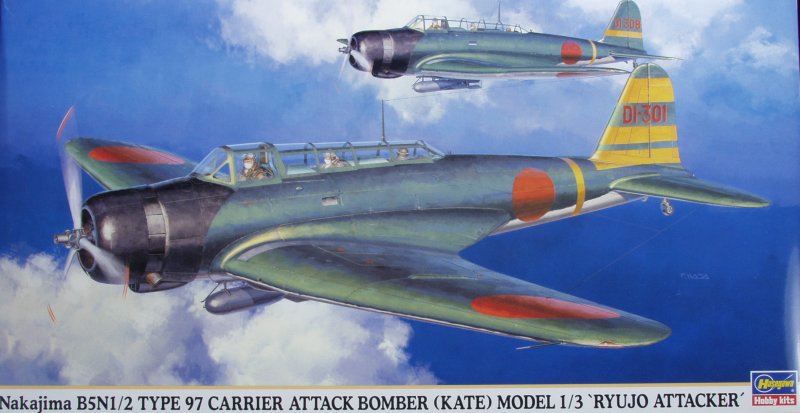
The Hasegawa kit comes in a typical high quality top open two part box with nice artwork on the top. Inside the box all of the sprues except the clear parts are in one large bag. I would have preferred to seen the use of more bags as some of the parts showed scuffing from shipping. The parts are presented on ten sprues molded in a medium gray color. Several of the sprues were fairly small. The parts feature recessed panel lines and fine recessed rivet detail and a few raised detail were applicable. The panel lines are quite fine and may disappear if one is too heavy handed applying paint. The surface is smooth and free of defects except for the aforementioned scuff marks. I only found a few hints of flash on my kit. The cockpit is quite extensively detailed with the only issue being the number of ejector pin marks on the cockpit side walls, eight on both which will require a lot of extra effort to fix. Marks were also found on the inside of the landing gear doors and one side of the landing gear struts. One reason for the high sprue count is the inclusion of the different engines and cowlings for the N1 and N2 variants. The flight control surfaces are all molded in the neutral position with the exception of the flaps which can be positioned either up or down. The aircraft can be equipped with either two 250kg bombs or one 800kg deck piercing bomb. Altogether there are 119 parts in gray by my count but a number of these will not be used depending on your choice of building a N1 or N2 version. See below.
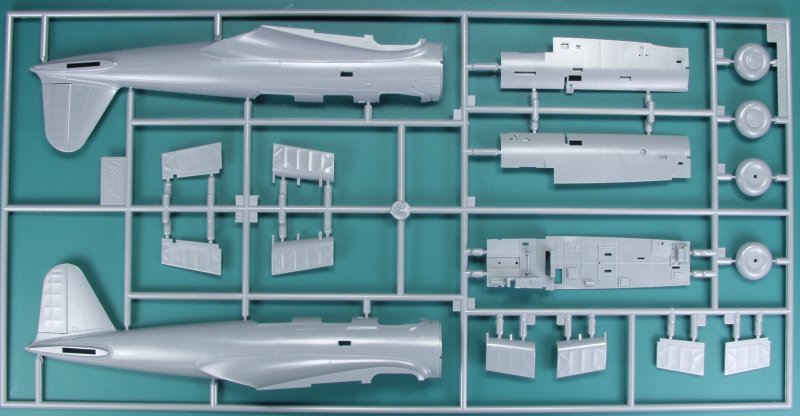
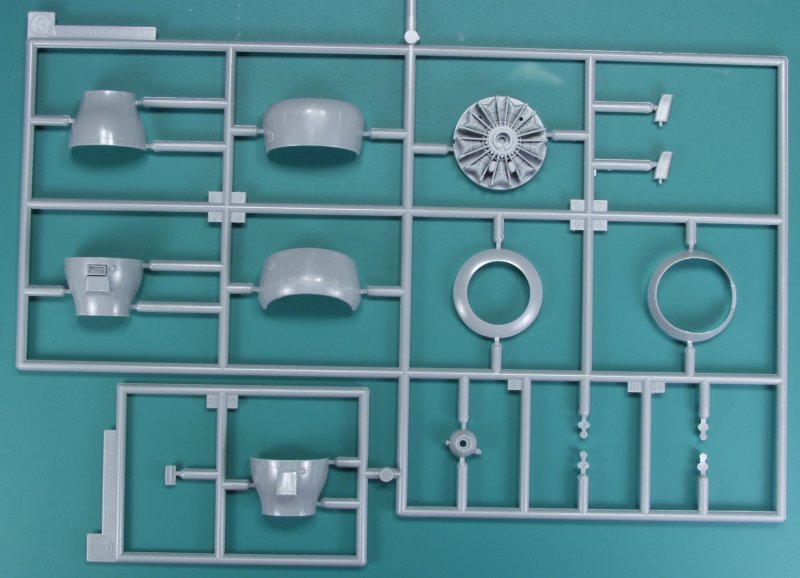
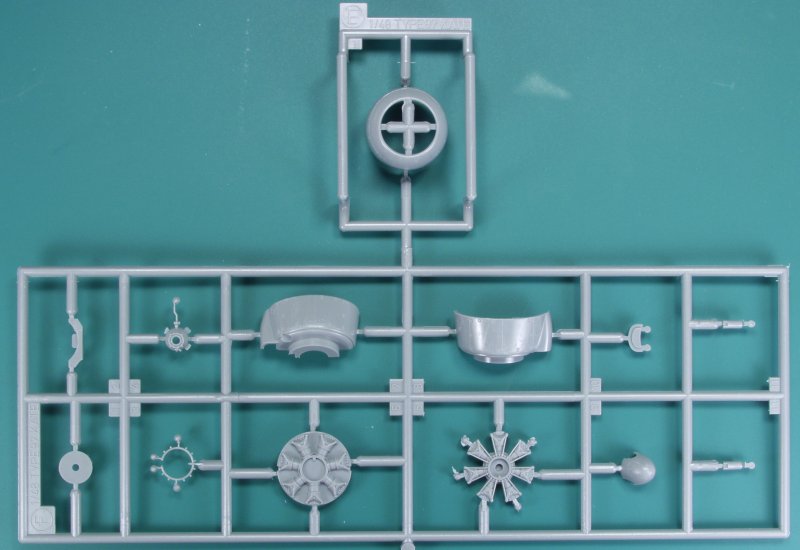
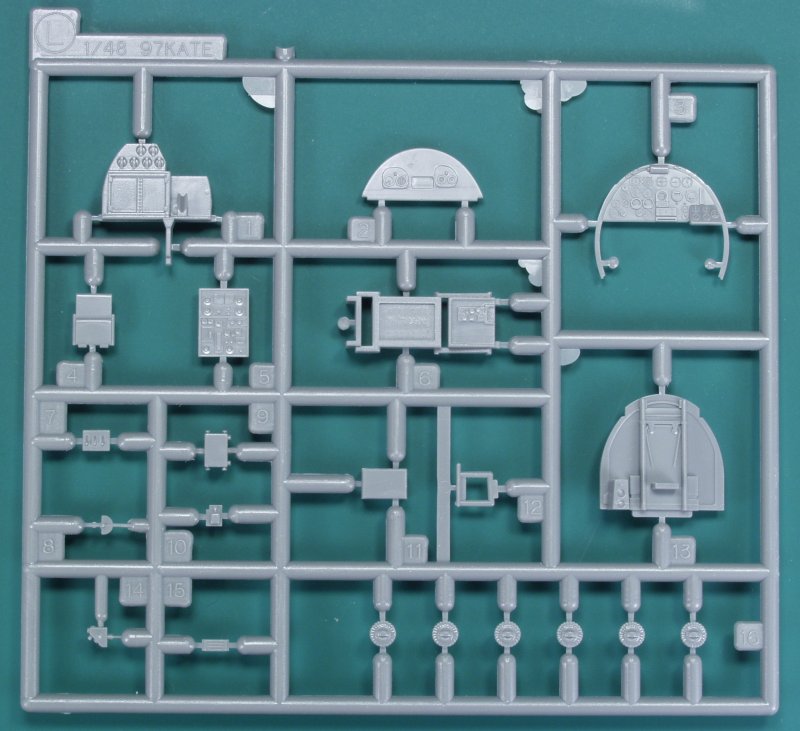
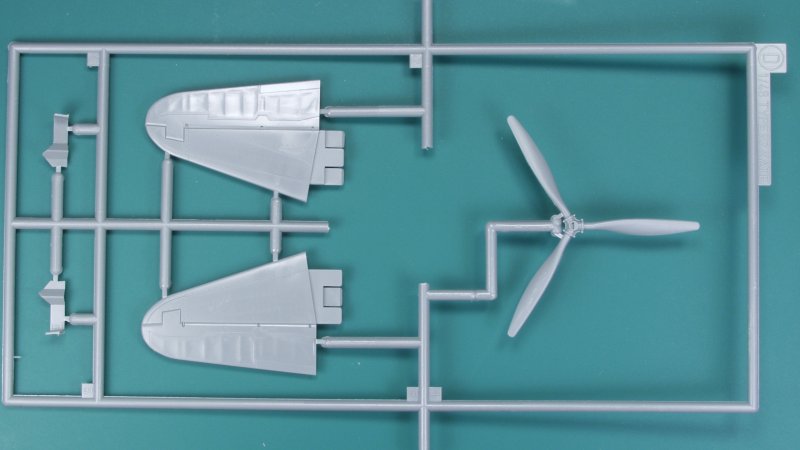
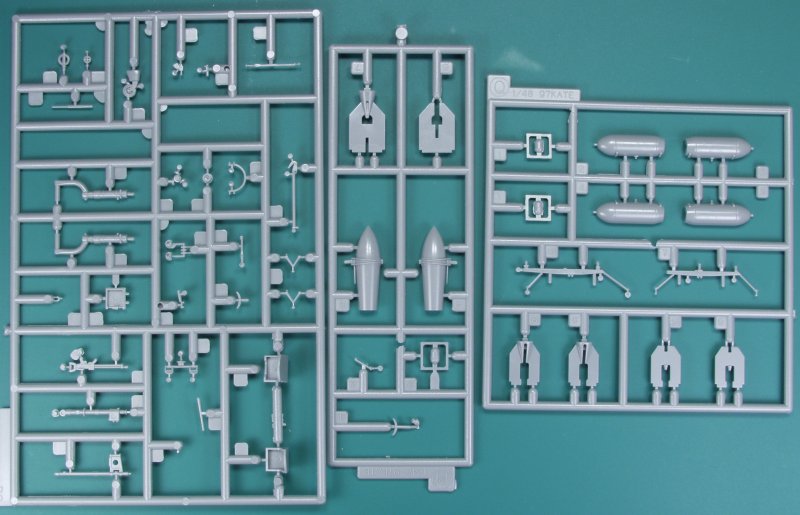
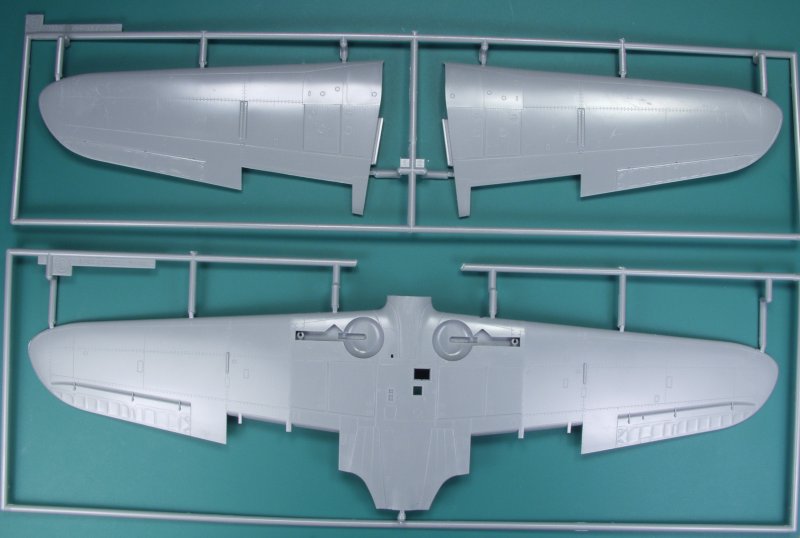
The clear parts are thin and clear and provide parts to display the cockpit open or closed. The closed piece on mine had some distortion as a result of molding on a couple of pains but with all the nice interior detail leaving it in the open position would be best choice anyway. The defect could be limited to my kit anyway. All together there are 14 clear parts. See below.

The decals appear thin and opaque with no registration issues. The large 62 has a lot of excess clear material around it that would be best if removed before using. The sheet provides marking for two aircraft, one B5N1 and one B5N2. See below.
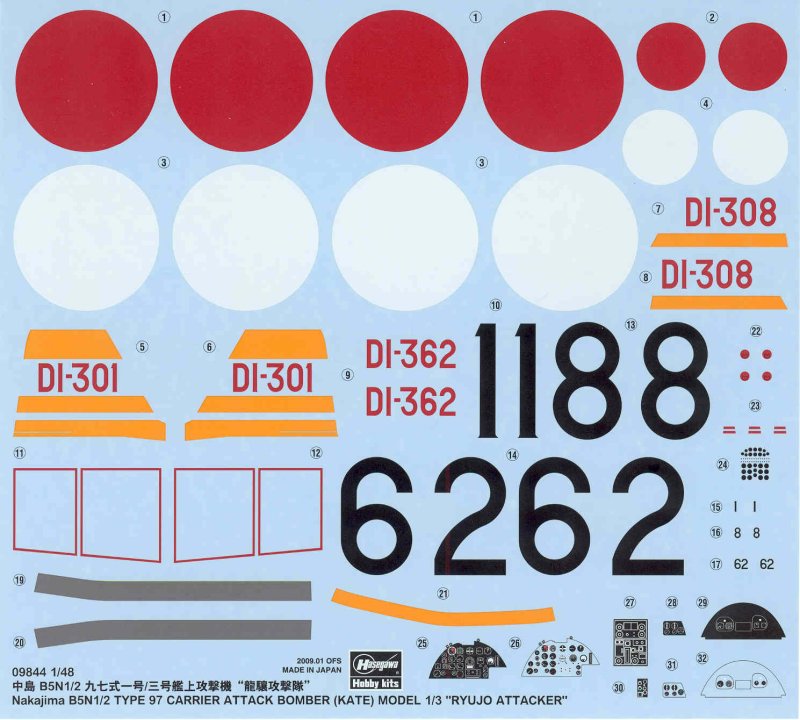
The instructions are presented on a wide format sheet folded to provide eight panels. Panel one has a brief history and specifications in English and Japanese, panel two has a part map and color guide. Panels three, four and five are assembly drawings and information. panels six and seven are painting and marking information and panel eight has decal instructions and the usual safety warnings.
After Market Goodies
Both photo etch [Eduard 48363 complete and FE162 ZOOM] and precut masks [Eduard EX163] are available for this kit but at this time I do not have either of them.
Conclusions
This is a very well detailed kit that should not present any major problems to modelers of any skill level other than rank beginners, highly recommended.
Links to kit build or reviews
Builds can be found here, here, here and here. Note that some of these are different releases of the same kit with different decals and options.
References
Japanese Aircraft of the Pacific War by R.J. Francillon
Back to the Misc Japanese Page